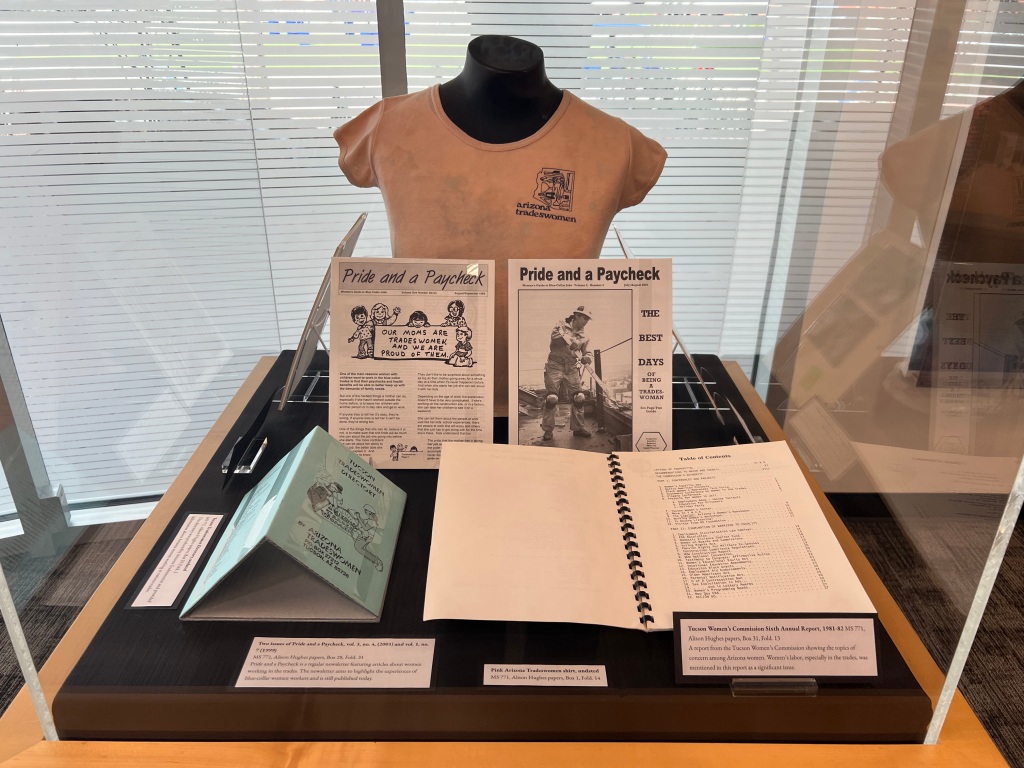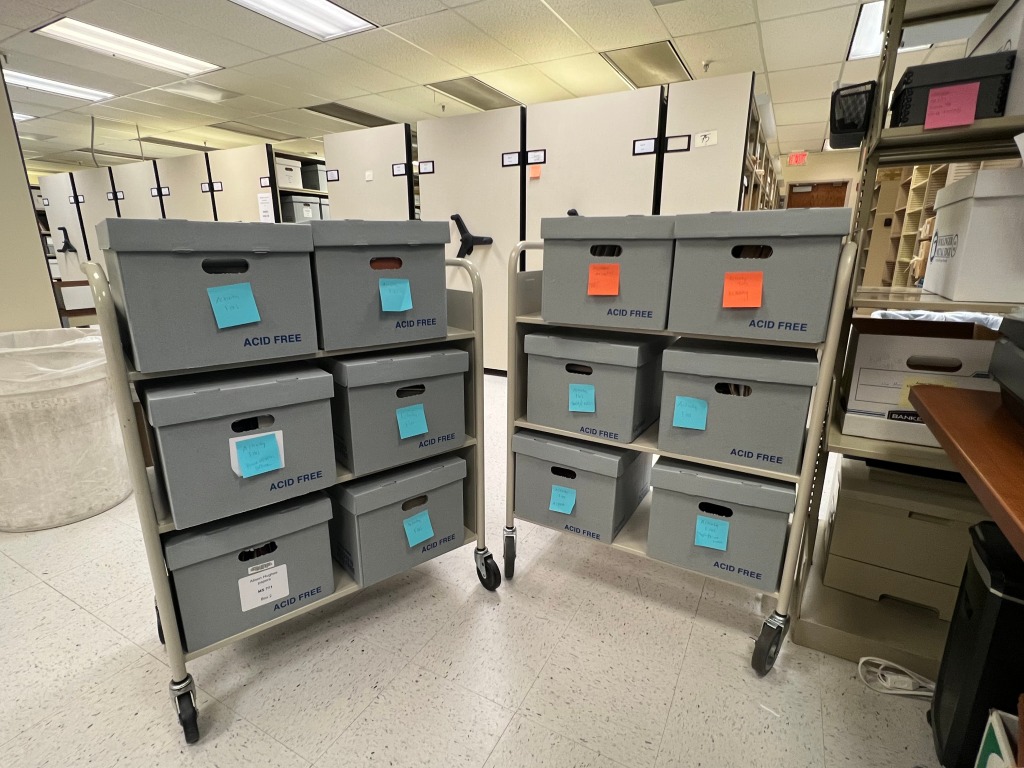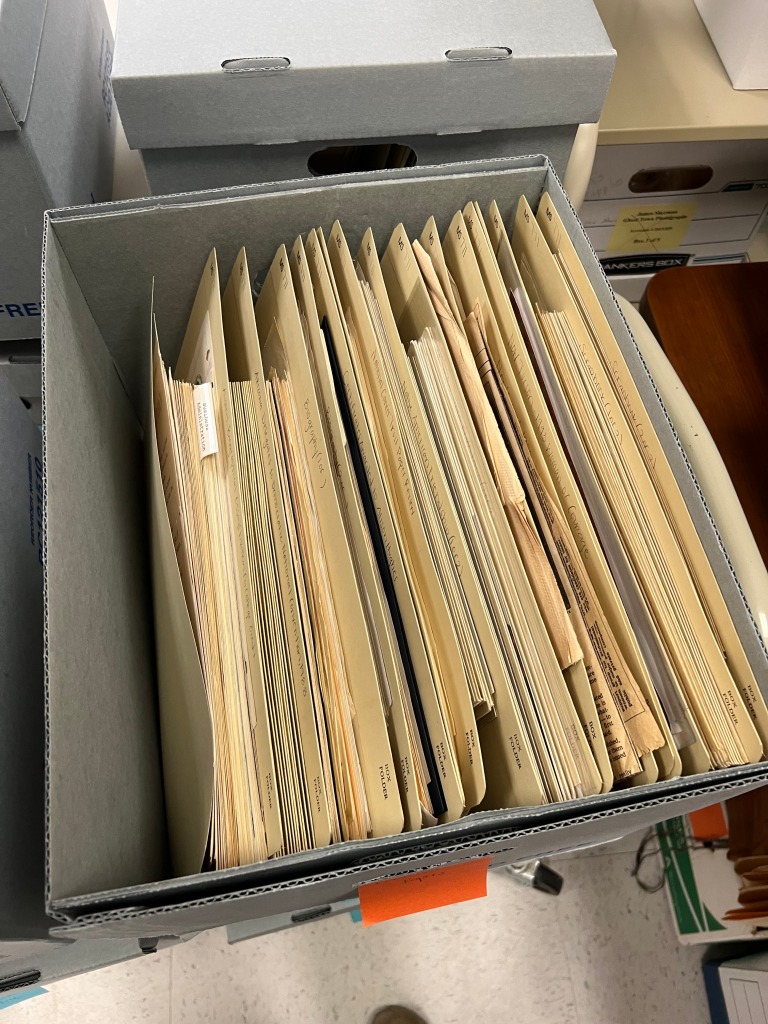Hello everyone. My name is Mark Willett and I am interning at Special Collections for the fall semester of 2023. I had previously gone to Special Collections a few times for prior courses and I applied to intern here in order to gain valuable experience performing the duties of an archivist. Starting in august, I began processing two different collections: the Neala Lynn Balmes photographs and the Alfred Buehman oral histories. These collections consist of CDs that have, so far, yielded a surprising amount of information from their external labels. Using these and a couple of accompanying notes, I was able to find out and record a substantial amount of information and I look forward to seeing what specific kinds of information I can find on the CDs when I examine their contents.

Over the course of September, I have also begun processing the Robert Moser papers, which mainly consist of various books, pamphlets, property evaluations and color slides. This collection has been interesting because its size is two boxes and the second box contains content from another person by the name of Barton Wright. Whereas Moser’s materials have primarily involved information on specific properties and ranching, Wright’s have revolved around historical topics.
Lastly, I am in the process of learning to digitize cassette recordings within a collection of oral histories from former workers for the Civilian Conservation Corps (CCC). The first cassette contains a recording of an interview of a worker named Miguel “Mike” Soto, who worked in the CCC until the outbreak of WWII. While listening to Soto’s story, I have also been able to extract metadata necessary to describe the tape and its contents. I look forward to soon completing the digitization proper and becoming more efficient and timely in completing the steps necessary to do so.










